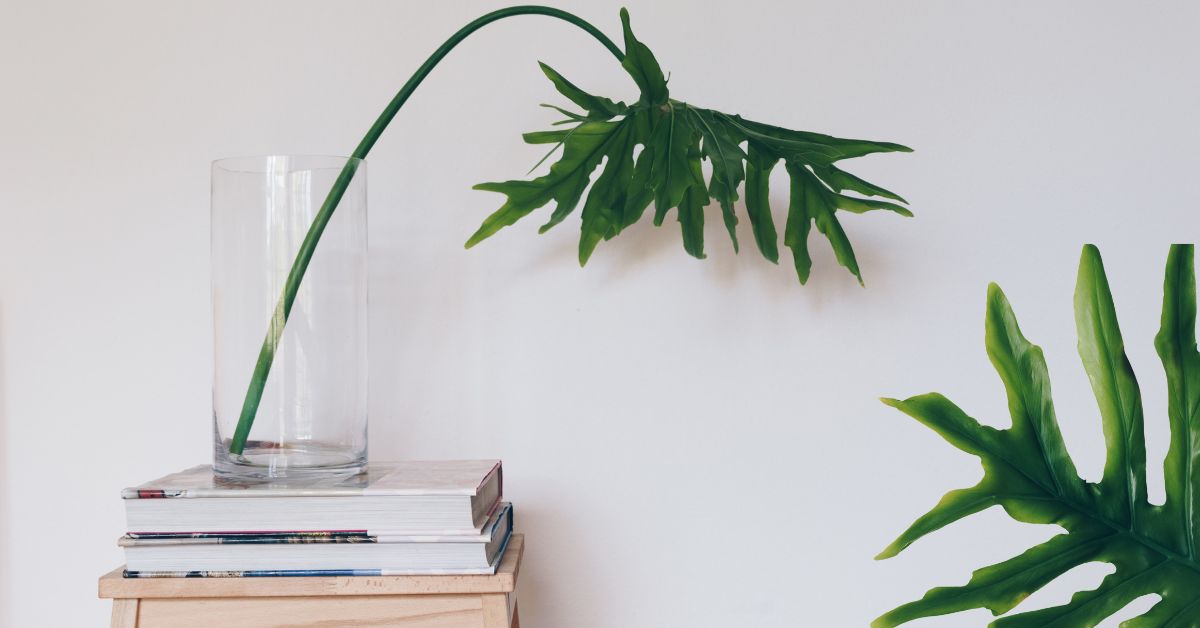Selloum Plant Secrets: Essential Tips for Plant Care
The Philodendron Hope Selloum, or Philodendron bipinnatifidum, or Thaumatophyllum bipinnatifidum, is a striking tropical plant that adds a lush, green touch to any indoor or outdoor space. Originating from South America, this resilient plant is known for its large, deeply lobed leaves and dramatic appearance. With proper care, the Hope Selloum can thrive in various environments, making it a popular choice among plant enthusiasts. This article will guide you through everything needed to ensure this beautiful plant remains healthy and vibrant.
Understanding the Basics of the Plant
The Philodendron Hope Selloum is called the Lacy Tree Philodendron due to its large, deeply divided leaves. This plant can grow up to 10 feet tall and spread wide, giving it a substantial presence in any space. Its glossy green leaves can grow several feet long, creating a tropical canopy reminiscent of rainforest environments. Given the proper care, it can thrive indoors and outdoors, adding a refreshing, natural aesthetic.
Ideal Growing Conditions
This plant is native to tropical climates and thrives in warm and humid environments. It prefers bright, indirect sunlight and is perfect for placing near windows or partially shaded outdoor areas. While it can tolerate some direct sunlight, excessive exposure can cause leaf burn. It’s important to avoid keeping it in low-light conditions, as this can stunt its growth and affect the vibrancy of its leaves.
Light Requirements
- Optimal Light: Bright, indirect sunlight.
- Tolerable: A few hours of direct light in the morning or late afternoon.
- Avoid Extended periods of harsh, direct sunlight or deep shade.
Proper Watering Techniques
Watering the Hope Selloum requires finding the right balance to avoid overwatering or underwatering. The plant enjoys consistently moist soil, but water should not be left to sit around its roots, as this can lead to root rot.
Watering Tips
- Water when the top two inches of soil are dry to the touch.
- Typically, watering once a week is sufficient.
- Ensure the pot has good drainage to allow excess water to escape, preventing soggy soil.
Soil Preferences and Fertilization
The Hope Selloum thrives in well-draining, rich soil that holds moisture but doesn’t stay waterlogged. A mixture of potting soil, peat moss, and perlite works well to ensure the soil remains airy while retaining moisture.
Fertilization
Regular feeding will keep the plant healthy during the growing season (spring through autumn). A balanced, water-soluble fertilizer can be applied monthly, but it should be diluted to half strength to avoid a buildup of salts that can burn the plant’s leaves.
- Ideal Soil: Well-draining, slightly alkaline, rich in organic matter.
- Fertilizer Frequency: Once a month during the growing season; dilute to half strength.
Temperature and Humidity Needs
The Hope Selloum best suits temperatures above 55°F (13°C). This tropical plant does not tolerate cold conditions well, so keeping it away from drafts and chilly windows during winter is essential.
Humidity Tips
The plant thrives in high humidity. Mistreating the leaves regularly or placing a humidifier nearby can help replicate its natural environment. Alternatively, putting the pot on a tray filled with pebbles and water can increase the humidity around the plant.
- Temperature Range: 55°F and above (ideal temperatures: 65°F–80°F).
- Humidity: High humidity levels (50%–60% or more).
Pruning and Maintenance Tips
The Hope Selloum is a low-maintenance plant, but occasional pruning helps keep it looking its best. Removing yellow or damaged leaves encourages new growth and keeps the plant healthy.
Pruning Guidelines
- Use clean, sharp scissors or shears to remove old or yellowing leaves.
- Regularly dust the large leaves to help them absorb light better.
- Rotate the plant weekly to ensure even growth on all sides.
Propagation Methods
Propagating the Philodendron Hope Selloum is a rewarding process, and it’s typically done through stem cuttings. The plant can be easily propagated in either water or soil, making it simple to multiply your collection or share with others.
Propagation Steps
- Select a healthy stem with at least two or three leaves.
- Cut the stem below a node (the area where the leaves attach).
- Place the cutting in water or directly in moist soil.
- If propagating in water, change the water weekly.
- Once roots are well-established, transfer the cutting to a pot with soil.
Managing Common Pests and Diseases
Although resilient, the Hope Selloum can occasionally be affected by pests such as spider mites, aphids, and scale. Regularly inspecting the plant will help catch any issues early. Treating the plant with insecticidal soap or neem oil can effectively resolve the problem if pests are detected.
Pest Management Tips
- Check the undersides of leaves frequently.
- Use insecticidal soap or neem oil for pest control.
- Avoid overwatering to prevent fungal infections and root rot.
Indoor vs. Outdoor Growth
This plant thrives both indoors and outdoors. Indoors requires a spot with plenty of indirect light, and it can be grown in large containers to accommodate its size. Outdoorsfer a partially shaded location where it can receive filtered sunlight.
Outdoor Care
The Hope Selloum can be grown outdoors year-round in warm climates, adding a tropical feel to the garden. However, in colder regions, it must be brought indoors during winter or grown in pots that can easily be moved.
- Indoor Tips: Place in a bright room with indirect light.
- Outdoor Tips: Plant in partial shade and protect from extreme temperatures.
Leaf Care and Aesthetic Appeal
The plant’s large, deep green leaves are visually stunning and excellent air purifiers, helping improve indoor air quality. To keep the leaves looking their best, regularly wipe them with a damp cloth to remove dust. This helps maintain their shine and ensures efficient photosynthesis.
- Leaf Size: Can grow several feet long outdoors, slightly smaller indoors.
- Maintenance: Wipe leaves with a damp cloth to keep them glossy.
Dealing with Environmental Stress
While the Hope Selloum is generally hardy, environmental stress can affect its health. Yellowing or browning leaves are often a sign of stress due to improper watering, lighting, or temperature fluctuations. It’s important to adjust the plant’s environment to alleviate these issues.
Common Stress Solutions
- Overwatering: Let the soil dry out slightly between watering sessions.
- Underwatering: Ensure consistent moisture without waterlogging.
- Too much light: Move the plant to a spot with filtered sunlight.
Seasonal Care Considerations
During winter, the plant’s growth slows down, requiring less water. Overwatering during this period can be harmful, so reducing watering frequency and allowing the soil to dry out more than usual is essential.
In spring and summer, the plant enters its active growing phase. At this time, regular watering, fertilizing, and adequate sunlight are essential for promoting healthy growth and vibrant leaves.
Seasonal Care Tips
- Winter: Reduce watering; avoid cold drafts.
- Spring/Summer: Increase watering frequency; fertilize monthly for optimal growth.
Landscaping and Decorative Uses
The Philodendron Hope Selloum is highly versatile, making it an excellent indoor and outdoor landscaping choice. Outdoors can serve as an accent plant or informal hedge. Its large, tropical leaves provide a lush garden backdrop, creating an exotic feel. Indoors, the plant is perfect for filling empty spaces with greenery, making it a popular choice for living rooms, offices, and lobbies.
Decorative Uses
- Indoors: Adds greenery to large rooms or spaces with bright light.
- Outdoors: Functions as a dramatic accent plant or natural privacy barrier.
Cold Tolerance and Hardiness
While this plant is quite hardy in warm conditions, it’s not suited for cold environments. In areas where temperatures drop below 55°F, it should be protected from frost or moved indoors. In some cases, frost blankets or covers can help protect outdoor plants during brief cold snaps.
- Cold Tolerance: Does not tolerate temperatures below 55°F.
- Frost Protection: In colder regions, use frost blankets or bring the plant indoors.
Unique Features and Benefits
In addition to its striking appearance, the Hope Selloum offers several practical benefits. Its large leaves act as natural air filters, helping to remove toxins from the air, which improves indoor air quality. Its robust structure also makes it a habitat for small animals like birds and insects in outdoor environments.
- Air Purification: Removes toxins, improving indoor air quality.
- Resilience: Ideal for both novice and experienced gardeners due to its hardy nature.
Conclusion
The Philodendron Hope Selloum is an eye-catching, resilient plant that can elevate any space with its tropical, lush appearance. Whether indoors or outdoors, it provides aesthetic beauty and practical benefits, such as air purification and ease of care. With proper watering, light, and attention to temperature and humidity, this plant will thrive and add a touch of nature to any setting for many years.
click here For more informative blogs
FAQs
How much light does the plant need?
It prefers bright, indirect light but can tolerate a few hours of direct sunlight. Avoid placing it in low-light conditions.
How often should it be watered?
Water once a week or when the top two inches of soil feel dry. Ensure the plant is not left sitting in water to prevent root rot.
Can the plant survive outdoors year-round?
In warm climates, it can stay outdoors year-round. In colder regions, it should be brought indoors during the winter.
What type of soil is best?
It thrives in well-draining, slightly alkaline soil that retains moisture but does not stay soggy.
How can pests be managed?
Regularly check for pests like spider mites and aphids. If pests are present, use insecticidal soap or neem oil to treat the plant.






